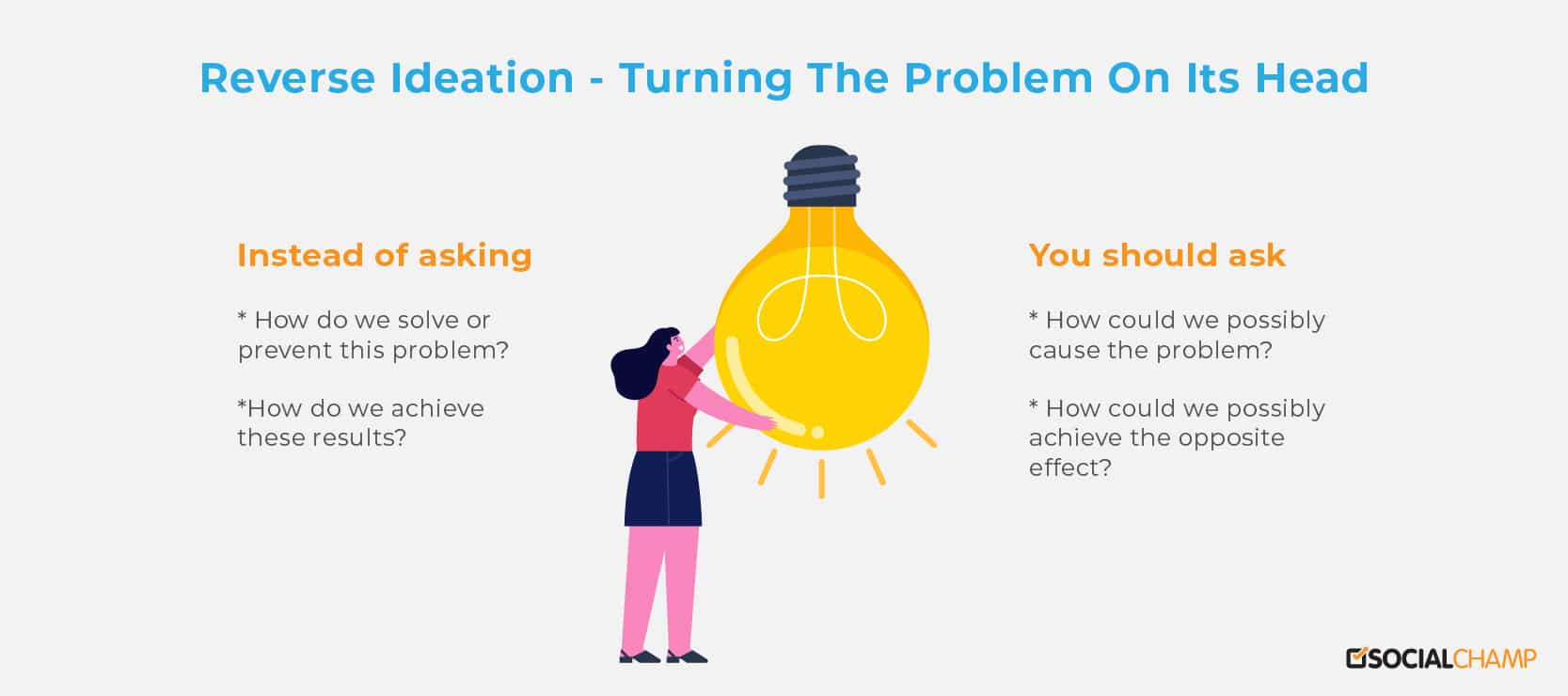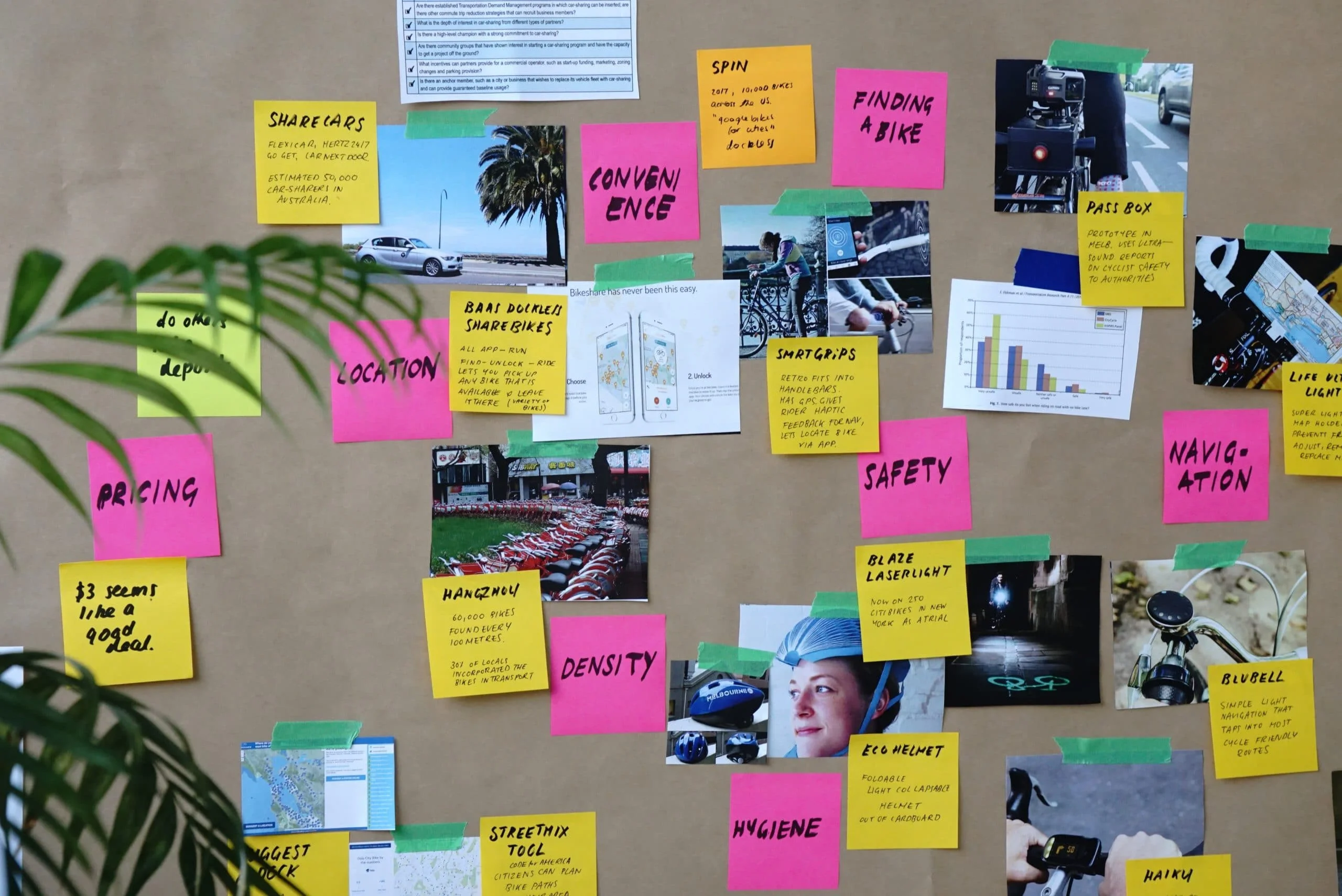“You can design and create, and build the most wonderful place in the world. But it takes people to make the dream a reality.” – Walt Disney
Creative brainstorming has its importance in every industry. And often takes control before starting any new project, or taking on a new client. Or for solving any internal or external challenge. When any team gets together to collaborate and solve the problem creatively, it has many positive outcomes. Every business wishing to last long in the digital world has to involve in team brainstorming sessions. You can adopt different brainstorming techniques for problem-solving and critical thinking.
Brainstorming Game Has Changed A Lot
The production of high quality and relevant content is becoming more essential for brands. Before this digital evolution, content used to take months to approve and execute. But, today, marketers have to provide the amount of visual content, which took months before, several times a week. With this increasing demand for ideas, how can one keep up his brain flowing with fresh ideas?
Brainstorming sessions are creative, productive, and fun events that help the team to collaborate and work on different projects. This improves teamwork. And taking different perspectives into consideration.
Those days are now past when the company meetings give only a single person the right to speak. This approach doesn’t apply to digital marketing anymore.
Today’s real-time marketing requires different strategies. And content that is more connecting, engaging, and has a shelf-life of more than a single tweet. If you are a digital marketer, you might have noticed the user’s demand for reliable and quality content. The one that speaks personally to their needs. The new digital marketing reality is that brainstorming is the most powerful tool. And is no longer an event that should hold for a few times a year.
Let’s discuss the three most powerful brainstorming techniques which can help you be more productive.
#1. BrainWriting
When you’re more than five or six members participating to share ideas, things can get a little rough. Some team members would love to share their ideas verbally. Some might take time to think through and respond. For them, these sessions can be a bit overwhelming.
According to research,
“In most meetings with traditional brainstorming, a few people do 60-75% of the talking. With brainwriting, everyone gets a chance.”
With this technique, everyone can share their ideas.
Brainwriting is simple. It’s a sequential process where instead of yelling out ideas each participant is asked to write it down on pieces of paper. Then, the sheet will be passed on to the next member, and he will add his idea in it. In this way, you will be able to collect all team member’s ideas and later on have a discussion on it.

When to Use This Technique:
Brainwriting is ideal when
- You’ve more than three or four problems that require solutions,
- There’s a large group of people involved in the session,
- The time is limited,
- There are introverts/reserved people in the team,
- You need ideas to flow freely without restrictions or judgments,
- Traditional brainstorming sessions aren’t working for your team,
- Unavailability of an experienced moderator.
#2. Mind Mapping
This brainstorming technique is used to collect ideas in a sequential manner (mostly linear). You chart your team member’s ideas into a logical grouping. A skeletal framework is created, which is used later to categorize the information collected. Mind mapping is suitable when you’re dealing with a process that contains many components. It is also considered as one of the best techniques when you’ve to plan agendas or projects.
Let’s say you want to brainstorm ideas on “what will be the target audience for our upcoming campaign?” Or “what social media metrics we should be preparing in our next monthly report?
Create a chart with the problem/question in the center. Use branches, or subsections to draw the ideas. You can use different colors, images, symbols, or codes to make it more fun.
If you haven’t tried this technique before, first give a brief to the team. Make sure all are on the same page before starting.
Here’s an example of using the mind mapping technique to plan an event.

When to Use This Technique:
Mind mapping is ideal when
- You’ve to take notes,
- The problem has several components to work on,
- Planning for new product launch or campaign,
- Researching information from different sources,
- Struggling with creative block,
- More than two teams are working together.
#3. Reverse Ideation
Reverse Ideation, also known as negative brainstorming is used to get different perspectives of the problem. It focuses more the other side of the picture. To use this brainstorming technique you have to start with a reverse question. Instead of discussing, “how can we solve this problem?” ask,
- What can be the worst-case scenario for this problem?
- How is this problem caused?
- What can be the opposite/negative effect of this?
- How can we achieve the opposite effect?
Now, brainstorm all the ideas for the reverse problem. And then, reverse them into a solution for the original problem.
For example, instead of brainstorming ideas on “How can we improve our customer service” Think about “What are the possible ways to frustrate our customers?”

When to Use This Technique:
Reverse ideation is ideal when
- You’re working on a new product,
- Working on user flow of your application,
- Imaginative problem solving is required,
- Doing a competitor’s research,
- Working on Facebook Ad campaigns,
- You want to think from the customer’s point of view.

Collaborate With Others in the Team
Team Collaboration by Social Champ gives more power to a team without sharing credentials and assigning roles, such as editor, author, and admin
Here are a few things to keep in mind before calling a brainstorming session:
- Identify the goals.
- Prepare the team before getting together.
- Appoint any leader of the moderator to track the flow.
- Invite people from diverse groups.
- Set a time limit.
- Write down the key points.
- Welcome additional feedback.
Brainstorming sessions are fun and productive when your team is excited to put fruitful input. And you have the right strategies at hand. We have got some of the best brainstorming strategies for digital marketers that can brighten your next session.
#1. Reviewing Your Top Performing Content
Dealing with social media management can give you hard times while looking for fresh content. When you don’t feel motivated enough to produce new content, the best place to look for the well-performed content you already have. Having an insight into the previous successful content might help you to cut out the inefficiencies you are facing right now. Your team can have the sessions to discuss new ideas on how to replicate the previous success. And avoid failures in the future.
#2. Going Seasonal
We live in a world of social media where there is a hashtag for every single day. Whether it’s to celebrate or denounce. From celebrating #EarthDay to #MemorialDay, many national holidays and fun festivals can grab the audience’s attention. Your brainstorming sessions can be more productive by keeping an eye on the upcoming holidays or seasons. Add them to your content calendar. And discuss it together with the team on how they can make sense for your brand’s online celebration. Review the trending news and hashtags and put the team’s effort to come up with creative details of it suitable for the brand. With a little effort and using the most convincing hashtags, you can definitely increase your customer engagement.
Here’s a simple example of how Realtor.com posted a humorous quiz on Thanksgiving.

Try different things on different platforms. Use Instagram stories to cover the season. Offer discounts with seasonal codes. These creative ideas can be discussed and finalize when the team sits together and share their thoughts in a brainstorming session.
#3. Exploring the Counter-Idea
There is always a second side of the picture, why not explore that side? Seeing both sides of the idea will boost your possibilities and can troubleshoot the angles which you have been thinking about. The main point is to look at the same thing from a different point of view to craft any new marketable twist.
#4. Getting More into Visuals
Organizing and putting your ideas into visual content is another essential step in your social management.
According to statistics, more than 80% of the communication online will be visual in 2018.
If you’re still in doubt, have a look at some of the most used and fast-growing social media networks like Instagram, Snapchat, or Pinterest. Bringing up different ideas and connecting them through text and images will make you think innovatively
#5. Assigning Each Member’s Task
Many marketing teams fail when it comes to concluding a meeting with a clear plan of action. Getting together and tossing around ingenious and fresh ideas is just an incomplete task. It wouldn’t result as you planned if each of the team members doesn’t know what he has to do.
When you only discuss the ideas and not define how the team members are going to work on it individually, it can create chaos. And sometimes let the whole team out their efforts in one single task neglecting the rest. Once the session is over, the leader should assign the jobs and the time limit for every individual.
#6. Encouraging Free-Thinking & Pushing the Boundaries
The process of brainstorming should be encouraging and supportive in such a way that it allows people to share their ideas without hesitation. The team should feel free to share their thoughts and ideas, no matter how ridiculous they might sound.
The culture of making fun or criticizing ideas can destroy the whole concept of this kind of session. Some of the most fertile ideas for social advertising will come up through these open brainstorming sessions where negativity is not invited to join.
#7. Investigating Your Competitors
Out of ideas or losing the grip? An excellent place to visit when you are feeling a little down on ideas is your competitors’ land. Have a look at what they are doing, and how you can do that better. Getting through a comprehensive analysis of your competitor or sometimes just a quick scroll acts as a kick start for your brain rolling.
#8. Solely Review Your Goals
Every once in a while, get your team involve in reviewing your goals and objectives you have regarding social media optimization.
What was your vision statement? How far you have come to achieving your goals?
Sometimes all you need is a reminder to head start or to get in the right direction. Asking the team to give their views and ideas will help you in achieving your targets.
#9. Changing the Environment
Working in the same tedious environment can make you less driven and motivated towards fresh ideas. To get into the flow before brainstorming, you can listen to some good music or an exciting podcast. To understand inspired nature is the best therapy. Go outside, get some fresh air. Release the stress out of your head to tune into positive ideas. Have some time with nature. It will give you an extra boost to stay focused.
#10. Get Organized
Get yourself organized by using any social media planning tools like Social Champ. It will let you be more handy and productive. These social media management tools are a great way to work on many social platforms in a single browser tab.
By infusing these easy and creative catalysts for your next brainstorming session you can get the resourceful flow and output you are looking for.
Let us know what brainstorming techniques you have been using which worked for you.










